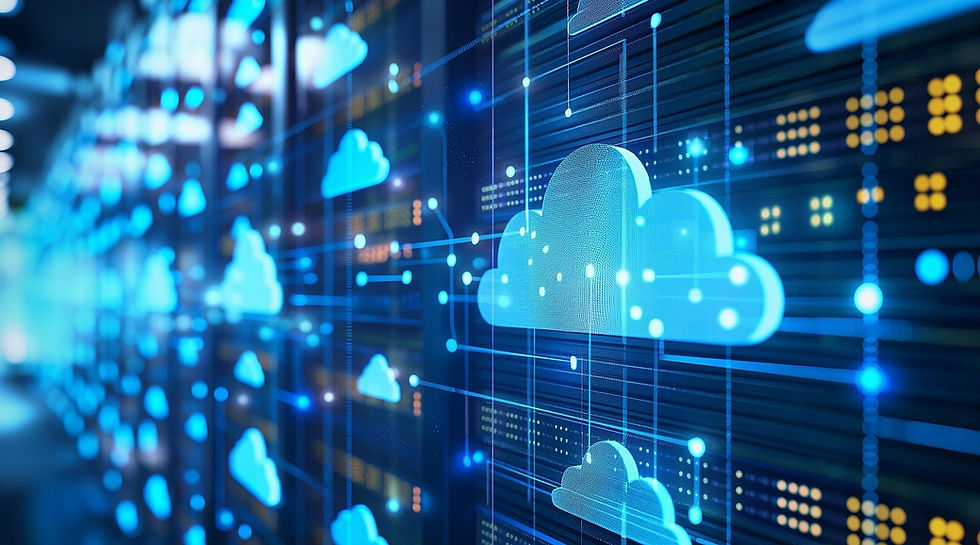Blockchain’s Role in the GPU Market Explosion
- blockchaindevelope8
- Sep 8
- 4 min read

The rise of blockchain technology has influenced many industries, from finance to supply chain management. One of the most surprising beneficiaries of blockchain adoption has been the GPU (Graphics Processing Unit) market. Initially designed for gaming and graphics rendering, GPUs became indispensable in cryptocurrency mining, pushing their demand and value to unprecedented levels. This article explores how blockchain boosted the GPU market, the ripple effects across industries, and how professionals can prepare through specialized learning such as an AI Certification, a Blockchain Course, and training in artificial intelligence.
The Link Between Blockchain and GPUs
Why Blockchain Needs GPUs
Blockchain networks like Bitcoin and Ethereum rely on decentralized systems where participants validate transactions. In proof-of-work blockchains, miners solve complex mathematical problems that require high computational power. GPUs, with their parallel processing ability, became the preferred choice for miners because they could handle repetitive tasks more efficiently than CPUs.
Ethereum’s Role in GPU Popularity
While Bitcoin mining shifted largely to ASICs (Application-Specific Integrated Circuits), Ethereum mining remained GPU-friendly for years. This drove global GPU sales, leading to shortages that even impacted gamers and creative professionals. The demand created a market surge where major manufacturers like NVIDIA and AMD reported record revenues.
Impact of Blockchain on the GPU Market
Market Growth and Price Surges
The GPU market experienced exponential growth due to blockchain mining demand. Between 2016 and 2021, mining contributed billions to GPU sales, with miners competing directly with gamers for the latest hardware. The high demand often pushed retail prices far above manufacturer’s suggested retail prices (MSRP).
Shortages and Industry Strain
This surge caused shortages that affected multiple industries. Gamers, video editors, and even AI researchers struggled to acquire GPUs at reasonable prices. Retailers faced stockouts, and secondary markets inflated prices. This highlighted the wide-ranging effects of blockchain-driven demand.
Boost in Innovation
Manufacturers responded by accelerating GPU innovation. Companies like NVIDIA began introducing mining-specific GPUs to separate markets and stabilize supply for gamers. This innovation, driven by blockchain, spilled into artificial intelligence and other fields, enabling faster model training and data analysis.
Blockchain and the Evolution of GPU Applications
Beyond Mining
Although mining was the original trigger, blockchain indirectly expanded GPU adoption into other areas. GPUs became key in handling blockchain data, securing networks, and powering decentralized applications (dApps).
Artificial Intelligence and GPUs
The same GPUs that powered blockchain mining also proved to be ideal for AI workloads. Training deep learning models requires immense processing power, something GPUs excel at. As blockchain pushed manufacturers to innovate, artificial intelligence research benefited from more powerful and accessible hardware.
Cross-Industry Synergy
This overlap meant that industries such as finance, healthcare, and logistics could simultaneously benefit from GPUs for both blockchain applications and artificial intelligence. Blockchain made GPUs mainstream outside gaming, while AI solidified their role in future technologies.
Key Factors Driving GPU Market Growth from Blockchain
Mining Profitability: Cryptocurrencies provided high returns, making GPU investment worthwhile.
Speculative Demand: Miners bought GPUs in bulk, anticipating higher crypto prices.
Wider Adoption of Blockchain: As companies explored blockchain solutions, GPUs were also adopted for testing and pilot projects.
AI Convergence: The parallel demand for AI accelerated the GPU market, merging interests across blockchain and artificial intelligence.
Long-Term Effects on the GPU Market
Sustainable Growth Through AI
As blockchain mining undergoes changes, such as Ethereum’s shift to proof-of-stake, the demand for GPUs from mining has decreased. However, the AI industry has stepped in to sustain GPU demand. Today, GPUs power generative AI, natural language processing, and robotics.
Balanced Supply Chains
Manufacturers learned from blockchain-driven booms and busts. They have diversified production lines, balancing demand between gamers, AI researchers, and blockchain enthusiasts.
Education and Professional Demand
The surge highlighted the importance of skilled professionals who understand both blockchain and AI. To stay competitive, many are pursuing certifications like a Blockchain Course or AI Certification, ensuring they can adapt to these fast-moving industries.
Educational Pathways for Professionals
Blockchain Course
A structured blockchain course gives professionals insights into mining, consensus mechanisms, and decentralized application development. This helps learners understand the technical foundation that once drove the GPU boom.
AI Certification
AI Certification equips learners with skills to handle GPU-powered deep learning, natural language processing, and other AI applications. Since blockchain indirectly spurred GPU innovations, AI professionals now benefit from the more powerful hardware developed during that period.
Artificial Intelligence in Practice
Artificial intelligence has moved beyond research into practical applications like autonomous vehicles, fraud detection, and personalized medicine. Professionals who understand the synergy between blockchain and AI stand at a unique advantage in the job market.
Blockchain’s Influence on the Future GPU Landscape
Decentralized Computing
Blockchain inspired concepts like decentralized GPU-sharing platforms, where idle GPUs can be rented out to process AI workloads. This model creates opportunities for individuals and companies to monetize hardware and accelerates research access.
Web3 and AI Integration
The Web3 ecosystem combines blockchain and AI, requiring high-performance GPUs. For example, AI-driven smart contracts and decentralized marketplaces need the same computational infrastructure that blockchain mining once did.
Responsible Growth
One criticism of blockchain mining was its environmental impact. As AI takes over the role of primary GPU consumer, companies are focusing on energy-efficient architectures. This shift promotes sustainable use of GPUs across industries.
Conclusion
Blockchain technology played a pivotal role in boosting the GPU market. By creating immense demand for computational power, it transformed GPUs from niche gaming tools into essential hardware across multiple industries. Although blockchain mining demand has waned, the momentum it created paved the way for artificial intelligence to become the next dominant force driving GPU innovation. For professionals, this history offers an important lesson: staying ahead requires constant learning and adaptation. By pursuing a Blockchain Course, an AI Certification, and developing expertise in artificial intelligence, individuals can position themselves at the center of two of the most powerful technology revolutions of our time.



Comments